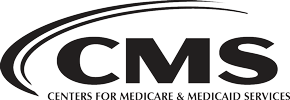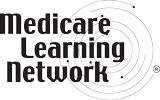What is the Medicaid NCCI?
The CMS National Correct Coding Initiative (NCCI) promotes national correct coding methodologies and reduces improper coding, which may result in inappropriate payments of Medicaid claims.
The Medicaid NCCI includes 2 types of edits:
- Procedure to Procedure (PTP) Edits define pairs of HCPCS and CPT codes that providers shouldn’t report together for various reasons. PTP edits prevent improper payments when incorrect code combinations are reported. Each edit has a Column One and a Column Two HCPCS/CPT code. If a provider reports the 2 codes of an edit pair for the same patient on the same date of service, the Column One code is eligible for payment, but the Column Two code is denied, unless an appropriate modifier is used. We’ll learn more about modifiers later.
- Medically Unlikely Edits (MUEs) define the maximum units of service (UOS) for each HCPCS/CPT code that a provider would report under most circumstances for a single patient on a single date of service. MUEs prevent payment for an inappropriate number or quantity of the same service on a single day.
Note: The Medicaid National Correct Coding Initiative program is different in key respects from the Medicare NCCI program. This educational tool focuses on how to access and use the Medicaid NCCI files available to the general public. If you’re looking for information on the Medicare NCCI program, visit the Medicare NCCI program webpage.
Background
Per the Social Security Act, states’ Medicaid programs must incorporate compatible NCCI methodologies in their systems for processing Medicaid claims. The 6 methodologies are:
- PTP edits for practitioner and ambulatory surgical center (ASC) services
- PTP edits for outpatient services in hospitals (including services offered in emergency and radiology departments, observation units, clinics, and laboratories)
- PTP edits for durable medical equipment (DME)
- MUEs for practitioner and ASC services
- MUEs for outpatient services in hospitals
- MUEs for DME
AOCs
An Add-on Code (AOC) is a HCPCS/CPT code that describes a service usually performed in conjunction with another primary service by the same practitioner. An AOC is rarely eligible for payment if it’s the only procedure reported by a practitioner. An add-on code edit would deny an add-on code if the related primary code isn’t reported or is reported but not paid.
Add-on code edits are part of the Medicare NCCI program but are optional under the Medicaid NCCI program. If a state Medicaid agency (SMA) chooses to apply AOC edits, the SMA should characterize these edits and any resulting denials as state-specific edits or denials, not NCCI edits or denials.
The Medicaid NCCI methodologies apply only to Medicaid Fee-for-Service (FFS) claims paid based on HCPCS/CPT codes. This includes claims paid on a FFS basis in State Medicaid Primary Care Case Management managed care programs. Application of NCCI methodologies to FFS claims processed by limited benefit plans or Managed Care Organizations (MCOs) is desirable but optional.
Why Would a Medicaid Health Care Professional or Provider Use the Medicaid NCCI Webpage, Tables, and Manual?
Correct coding and reporting of services are critical aspects of proper billing. Providers can’t bill Medicaid patients for a service denied based on Medicaid PTP code pair edits or MUEs. NCCI documents on The National Correct Coding Initiative in Medicaid webpage help providers avoid coding and billing errors that lead to payment denials.
Note: NCCI doesn’t include all possible combinations of correct coding edits or types of unbundling. Providers must code correctly even if there are no edits to prevent incorrect code combinations. If you find out you’ve coded a claim incorrectly, contact your SMA about potential payment adjustments.
How Current are the Medicaid NCCI Tables?
The complete updated Medicaid NCCI edit files are publicly available on the Medicaid NCCI Edit Files webpage at the beginning of each calendar quarter. New edit files replace the Medicaid NCCI edit files from previous calendar quarters. The presence of a HCPCS/CPT code in a PTP edit or an MUE value for a HCPCS/CPT code doesn’t mean that any or all state Medicaid programs cover that code. Individual SMAs may have state-specific edits that aren’t NCCI edits.
Note: SMAs must download NCCI edit files available on the secure Regional Information Sharing System (RISSNET) portal rather than using the publicly available files on Medicaid.gov because SMAs must make sure they or their vendor use the correct Medicaid NCCI edits to resolve Medicaid claims. The publicly available files on the NCCI Medicaid webpages are for providers and the general public. States can’t use the publicly available files for processing and paying Medicaid claims. NCCI edit files on the RISSNET secure portal have more information needed for SMAs’ correct claims processing. SMA use of the public files that don’t have edit history may result in improper payment or incorrect denials. The public files don’t have the Correspondence Language Example Identifiers (CLEIDs) that are in the files on the RISSNET secure portal. CLEIDs provide information to SMAs and fiscal agents about the rationale for NCCI edits that can be used by states to help educate providers about the edits. Visit the Medicaid NCCI Correspondence Language Manual for general information and examples of CLEIDs.
How to Find the Medicaid NCCI Tables and Medicaid NCCI Manuals
Visit the Medicaid NCCI Reference Documents webpage to review the Medicaid NCCI Policy Manual, the Medicaid NCCI Technical Guidance Manual (TGM), and the Medicaid NCCI Correspondence Language Manual. You’ll find more information in the Manuals section.
Visit the Medicaid NCCI Edit Files webpage to search or download the files.
Note: Medicaid coding NCCI edit decisions are based on:
- Conventions defined in the AMA’s CPT Manual
- National and local policies and edits
- Coding guidelines developed by national health care organizations
- Analysis of standard medical and surgical practices
- Review of current coding practices
Before CMS finalizes MUEs, they send the proposed edits for review to: the AMA, national medical or surgical societies, and other national health care organizations, including nonphysician professional societies, hospital organizations, laboratory organizations, and DME organizations.
CMS also sends proposed PTP edits to national health care organizations for review and comment before finalizing them.
Code Ranges
The following HCPCS/CPT code ranges can be found in the tables:
- 00000-09999: Anesthesia Services
- 10000-19999: Surgery (Integumentary System)
- 20000-29999: Surgery (Musculoskeletal System)
30000-39999: Surgery (Respiratory, Cardiovascular, Hemic and Lymphatic Systems) - 40000-49999: Surgery (Digestive System)
- 50000-59999: Surgery (Urinary, Male Genital, Female Genital, Maternity Care and Delivery Systems)
- 60000-69999: Surgery (Endocrine, Nervous, Eye and Ocular Adnexa, and Auditory Systems)
- 70000-79999: Radiology Services
- 80000-89999: Pathology/Laboratory Services
- 90000-99999: Medicine, Evaluation and Management Services
- A0000-V9999: Supplemental Services
- 0001T-0999T: Category III Codes
- 0001M-0010M: MAAA Code
- 0001U-0034U: PLA Codes


